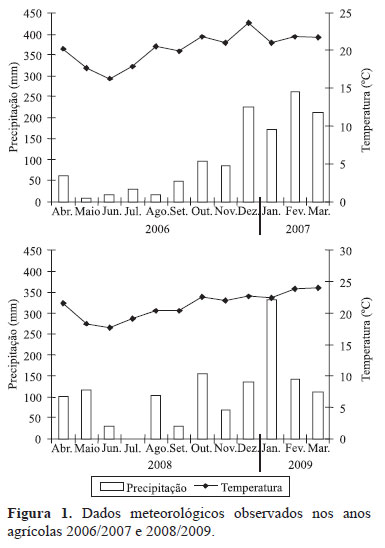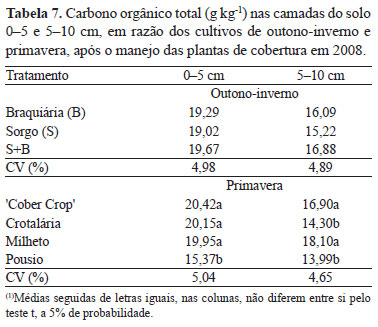The objective of this work was to evaluate the influence of fall-winter and spring crops, cultivated under no-tillage system, on the aggregates and organic matter of a Rhodic Ferralsol. The experiment was performed in the 2006/2007, 2007/2008 and 2008/2009 growing seasons. Congo signal grass (Urochloa ruziziensis), grain sorghum (Sorghum bicolor) and sorghum mixed with brachiaria were cropped in the fall-winter to consist the main plots. In the spring, millet (Pennisetum glaucum), 'Cober Crop' (Sorghum bicolor x Sorghum sudanense) and Indian hemp (Crotalaria juncea) were cultivated as subplots as well as a fallow treatment. Soybean was cropped in the summer, totaling 12 treatments. Cover crop dry matter and root growth were evaluated in 2006 and 2008. Soil samples were taken from 0-5 and 5-10 cm depths, after spring cover crops managing, in the first and third years. The mean weight diameter, geometric mean diameter, aggregate stability index, aggregates larger than 2 mm, organic matter and total organic carbon levels were evaluated in the samples of the third year. Millet and 'Cober Crop' showed higher dry matter production and root growth. The soil aggregation was improved by cover crop rotations before the summer growing season. The cultivation of 'Cober Crop' and millet influenced the macroaggregate formation in the superficial layers
carbon; organic matter; cover crops











